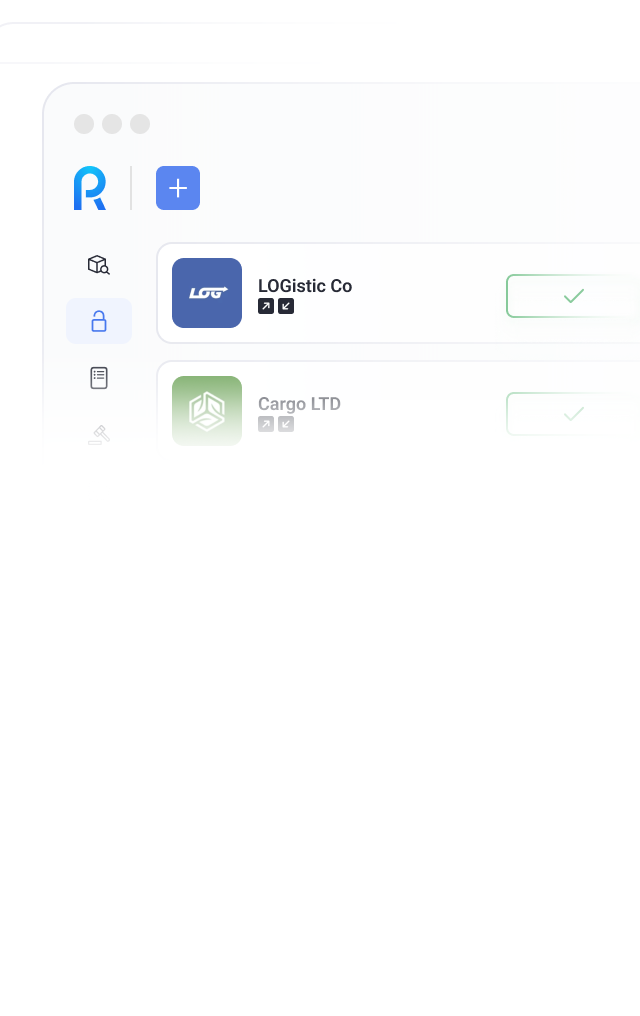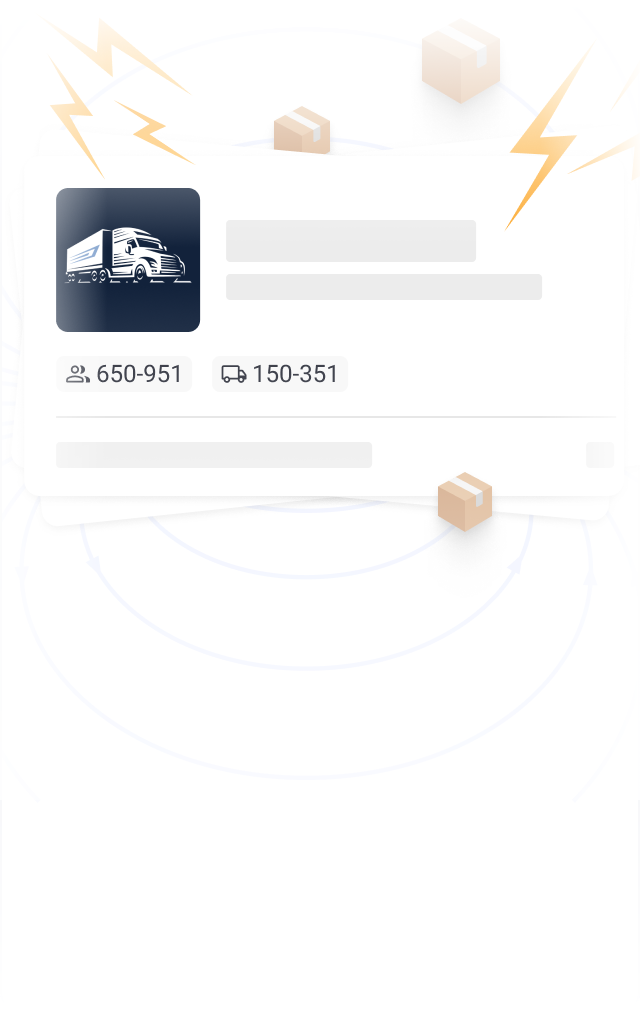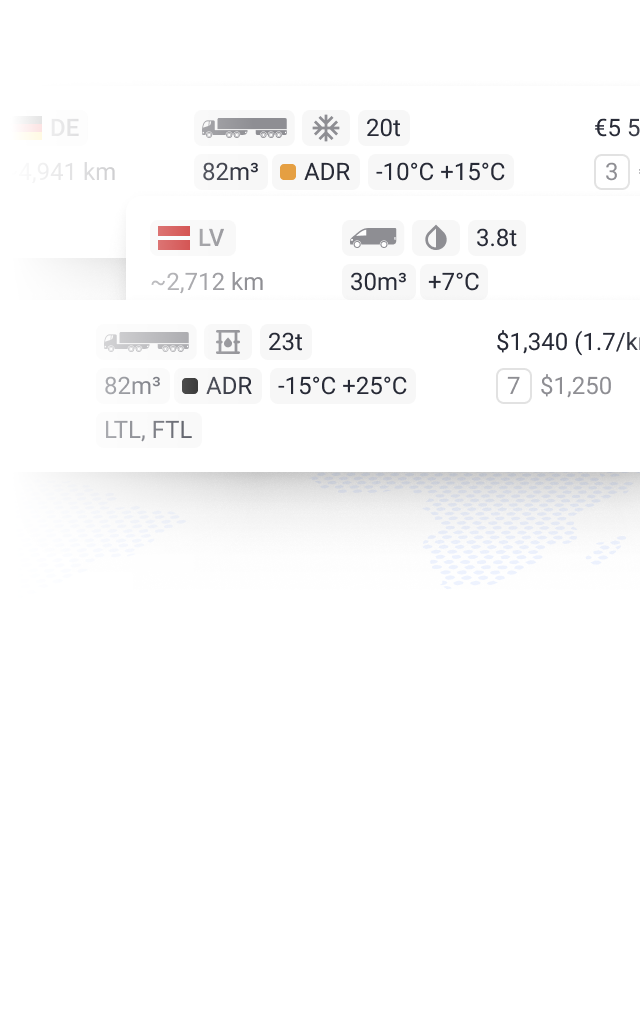
Last-Mile Delivery



















In logistics, last-mile delivery refers to the transportation of goods from a sorting and distribution hub to the final recipient — whether it’s a production warehouse or a retail location. This is the final leg of the product's journey and directly impacts customer satisfaction.
The high cost of delivery at this stage is linked to increased operational expenses due to:
- heavy traffic in urban areas;
- the dispersion of final destinations in rural regions.
Higher costs on the last leg of delivery are also driven by the growing pressure on logistics companies to shorten delivery times. Suppliers aim to meet customers' expectations of receiving their orders as quickly as possible — ideally within 1–2 days (in reality, the last-stage transportation process often takes several working days).
Logistical challenges in last-mile delivery are further complicated by issues such as delays at the start of the supply chain and theft along the route — addressing these problems also contributes to rising costs.
Last-mile delivery services use the following transportation methods:
- Unimodal (single-mode). There are no intermediate stops for transshipment between the starting and final points of the route. The cargo is delivered using a single mode of transport.
- Combined. Door-to-door courier delivery involving reloading from one type of transport to another. The shipment is packed into a container or other standardized packaging. The logistics company deals with a shipping unit rather than individual cargo items, and a single transport document is issued for the container covering the entire journey.
- Multimodal. International container transport under a single through document and unified tariff. The cargo is transported using various modes of transport, but responsibility lies with one carrier — the delivery organizer.
- Intermodal. Delivery is organized by an operator who engages different carriers, each responsible for the cargo on their segment of the route. Separate documents are provided depending on the mode of transport used. The cost of door-to-door courier service is calculated as the sum of the freight charges from each carrier involved.
The final stage of the logistics chain is the most dynamic. Door-to-door delivery services are influenced by the following factors:
- traffic congestion;
- difficulty finding parking;
- sudden fluctuations in the number of orders;
- a high volume of monotonous work, increasing the risk of errors;
- complex routes with numerous stops and maneuvers;
- the possibility of the customer not being present upon arrival.
Additionally, maintaining a high level of service is essential. Customers may wish to modify or add to their order, change the delivery time, or alter the destination. If a company does not offer such flexibility, it risks becoming non-competitive.
These challenges make route planning and adjustment a complex task. To address this, last-mile delivery services utilize specialized software solutions.
Door-to-door delivery offers the following advantages:
- Convenience for the customer — no need to spend time traveling to pick up the purchase.
- High delivery speed.
- Enhanced customer loyalty.
- Suppliers offering last-mile delivery are always in demand.
- Door-to-door transportation services experience fewer cancellations compared to other types of delivery.
However, there are also some drawbacks to this service:
- High cost. Although it’s worth noting that if a customer opts for self-pickup, their expenses may not necessarily be lower than paying for a specialized delivery service.
- Possible delays. The last-mile delivery timeline depends on whether there were no delays at earlier stages of the route.
The disadvantages of door-to-door delivery can be minimized through meticulous route planning and timely preparation of necessary documentation.
Prices for door-to-door delivery depend on the following factors:
- Distance. The farther the recipient is from the warehouse, the more fuel and resources are required, which increases the cost of the service accordingly.
- Dimensions and weight of the cargo. Transporting heavy or bulky goods requires expensive specialized equipment.
- Urgency. To expedite order fulfillment, last-mile delivery services may require special services or additional transportation, increasing costs.
- Type of transport. For example, using specialized heavy-duty vehicles can make delivery more expensive.
When calculating the cost of last-mile delivery, companies also take into account many other factors — route complexity, seasonality, and type of cargo.
Partners are chosen based on the following criteria:
- Reputation and reliability. Preference is given to market players with extensive experience and positive reviews.
- Technology integration. According to Convey's data, 47% of customers are willing to discontinue cooperation if they cannot track their shipment throughout its journey. Moreover, modern courier services use software tools for process automation and optimization, which improves service quality and reduces costs.
- Flexibility in delivery options. The best companies offer various delivery types, such as express, same-day, next-day, or delivery on a specified date. Customizable options, like specifying a time window or an alternative drop-off location, are also appreciated.
- Communications and customer support. Ensure there is a reliable communication channel between the shipper, courier, and recipient. Established transportation companies offering door-to-door delivery also provide customer support services.
- Pricing policy. Organizations with clear and transparent pricing structures are preferred.
- Scalability. Choose a partner with consideration for future business growth. As your shipping volume increases, the courier service should continue to provide quality, stable delivery.
- Safety and protection. Verify that parcels are handled carefully. A well-organized process ensures goods are neither damaged nor lost. Ideally, a system for confirming successful delivery via digital signature or photo report should be in place.
It’s helpful to review key performance indicators of last-mile delivery services, such as error rates, average transportation cost, and the percentage of successful deliveries on the first attempt, among others.
A suitable transportation and forwarding company specializing in last-mile delivery can easily be found in the Roolz directory. Add your company, find a reliable logistics partner, and conveniently organize freight transportation on the Roolz platform!
What is last-mile delivery?
In logistics, last-mile delivery refers to the transportation of goods from a sorting and distribution hub to the final recipient — whether it’s a production warehouse or a retail location. This is the final leg of the product's journey and directly impacts customer satisfaction.
The high cost of delivery at this stage is linked to increased operational expenses due to:
- heavy traffic in urban areas;
- the dispersion of final destinations in rural regions.
Higher costs on the last leg of delivery are also driven by the growing pressure on logistics companies to shorten delivery times. Suppliers aim to meet customers' expectations of receiving their orders as quickly as possible — ideally within 1–2 days (in reality, the last-stage transportation process often takes several working days).
Logistical challenges in last-mile delivery are further complicated by issues such as delays at the start of the supply chain and theft along the route — addressing these problems also contributes to rising costs.




Add your company


 en
en fr
fr de
de hi
hi pl
pl es
es tr
tr uk
uk